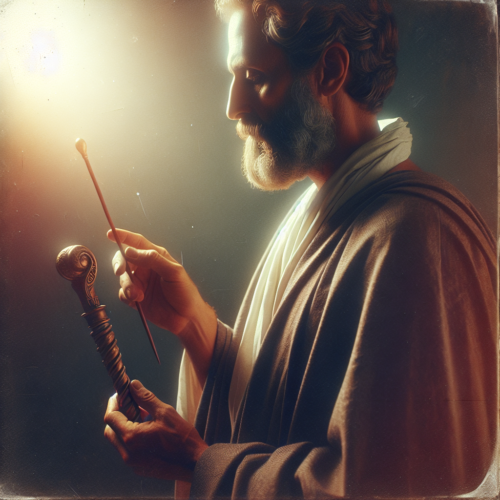Asclepius is the god of medicine, healing, and physicians. He is the son of Apollo, the god of healing and prophecy, and Coronis, a mortal woman. Asclepius’s birth is marked by drama; his mother was killed for being unfaithful to Apollo, and he was rescued from her burning body.
Raised by the centaur Chiron, Asclepius was taught the art of medicine. Chiron’s teachings were profound, enabling Asclepius to surpass both his father and his mentor in medical skills. This education included the use of drugs, incantations, and love potions.
Asclepius’s abilities in medicine and healing were unparalleled. He is famously credited with the power to restore the dead to life, a feat that eventually led to his downfall. This ability greatly concerned Hades, the god of the underworld, who felt his domain was being encroached upon. Zeus, too, saw Asclepius’s power as a threat to the natural order, fearing that Asclepius might make all humans immortal.
Symbolism
The Rod of Asclepius, a staff entwined with a single serpent, is the most enduring symbol associated with him. This symbol remains prominent in the medical field today, representing healing and medicine. The serpent’s association with Asclepius is linked to its shedding skin, a symbol of rebirth and renewal, and its ability to cure from its venom, reflecting the dual nature of medicine.

Zeus killed Asclepius with a thunderbolt to maintain the balance between life and death. However, recognizing his contributions to humanity, Zeus placed him among the stars as the constellation Ophiuchus. After his death, Asclepius was worshipped as a god, and numerous sanctuaries, known as Asclepieia, were established across Greece. These served as healing centers where people would come to be cured of their ailments.
